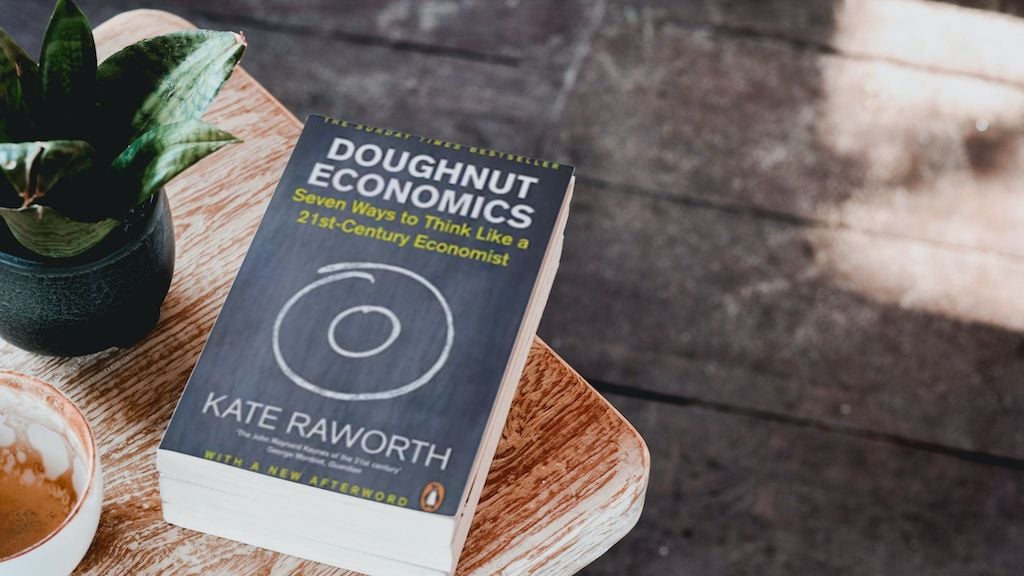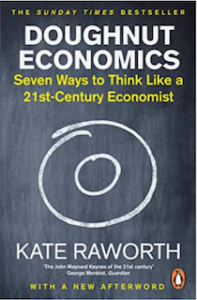Doughnut Economics by Kate Raworth: Book Review & Summary
Disclosure: This post contains affiliate links for which we may receive a commission when to click on the link and purchase. We appreciate your support.
Are you currently searching for the best economics books?
There are so many personal finance and macroeconomics resources that are available on the internet, but the problem is you need to take time to search for the right one, which can help you to improve financial literacy in economics.
In addition, getting familiar with foundational knowledge associated with economics such as GPD, productivity, and price floor, to name a few, which you prove to be super helpful in terms of managing budgets and understanding the world economic machine works.
For this reason, one of the Sunday Times bestseller books- Doughnut Economics by author Kate Raworth, will provide the foundational knowledge to help you familiarize yourself with several economics terms and principles.
Key Takeaways
Table of Contents
- Doughnut Economics book is the Sunday Times bestseller, which will cover several core economics principles so that you should get familiar with those economics terms to apply to your personal finance.
- If you want to dive deeper into learning about macro and microeconomics, then it’s recommended to have this brilliant book on your bookshelf.
- Indeed, the most important aspect of this book is to understand the 7 economic principles so that you can understand how the world economic machine works.
Our readers get A FREE TRIAL WITH Kindleunlimited, claim your first month free here.
1. About the author:
Before getting into the summary and viewpoints of this book, it’s essential to acknowledge the author who published this excellent book, which makes it easy for us to understand basic economics.
Kate Raworth was born in 1970, in the United Kingdom, she is well known for her role as a senior professor at Oxford University and Amsterdam University.
Besides her popular role as a professor, she is an economic author, who published the most popular economic book called: Doughnut Economics, which provides several economic frameworks and theories to help you understand the world’s macroeconomics.
2. The Economics in 21 St- Century
Over the past few decades, there is some good news the global economy has steadily improved in terms of income poverty, life expectancy, and health care.
In particular, more and more people in third-world countries are able to access clean water, which helps to fulfill their basic needs for their hygiene and well-being.
Thanks to the development of the global economy due to the increase in trade and globalization. However, there are some critical challenging for economics in the 21 st-century that the author highlight as follows:
- One of the biggest challenges is overpopulation, which predicts there will be 10 billion people living on our planet. This issue will have many issues on food security, environmental issues, and high unemployment rates.
- In addition, income inequality is another major issue as the world has billions of people who live in extreme poverty, and can not even earn 3$ a day.
- The rising global temperatures are another biggest threat to our humanity in terms of food security and environmental change like floods, drought, glaciers, and sea ice melting, etc.
- The rich are even becoming richer, and the book highlights that 1% of the world’s rich population has more wealth than the rest.
> Use this link to read the book
3. What are the 7 principles of Doughnut Economics?
In this section, we will explore seven key elements of Doughnut Economics, you can use these frameworks as a way to think like an economist.
The author believes it is navigation that helps economists to overcome some economic challenges in the 21 century. The following are seven principles as follow below:
- ” Change the goal“: is the first element that requires a novice or economist to change the way of their thinking mindset from GDP to Doughnut. In particular, the author argues that over the past decades, GPD is the main factor that can track the progress of a country’s economy. But, this measurement can have a negative impact on income equality and environmental issues.
For this reason, I like this idea because the author suggests that we should pay more attention to sustainable development in terms of preserving our environment, and income inequality, rather than just concentrating on boosting the GDP.
- ” See the big picture”: the main objective of this idea is to master the common goal of all the involved stakeholders, especially, the need for working together among local governments, households, and business owners.
- ” Nurture human nature”: as human nature, we tend to be more self-interested and interdependent within society. With the ” nurture of nature”, it is time to bring the common objective by working together to adapt to the new changing economic and environmental challenges.
- ” Get savvy with systems”: instead of concentrating on the supply and demand diagram, the need to get familiar with the complex economic system like climate change, boom, and bust, unequal income, etc.
- ” Design to distribute”: the economy in the past century had dealt with income inequality, which makes the rich richer. The new idea in the book suggests that it’s essential to design an economy that can add more value for everyone, such as by redistributing wealth.
- ” Create to generate”: in the 21 first economic century challenge, the industrial revolution caused damage to the ecological systems. Thus, it is important to create a ” circular economy” that can involve everyone in sustainable development and protect the environment.
- ” Be agnostic about growth”: the last element of the seven principles is to remind everyone that should pay more attention to creating economies that can help to improve in all aspects of life, rather than just solely focusing on GDP growth.
The author creates the 7 principles of Dought Economics, which she believe those principles will help modern economists to create a better economy, which can benefit households and individual in society.
Final thoughts on Doughnut Economics
We discussed the seven elements of Dought Economics, which help us to change our mindset and think like an economist. Those principles are considered a navigator that can help to continue to thrive and innovate to reach our common goals.
However, it would challenge to bring everyone together and put principles into real-world practices.
Additional reading:
> Book Review & Summary: Why The Rich Are Getting Richer By Robert Kiyosaki
> 6+ Best Economics Books for Beginners
Don’t forget to share and Join us at Jns-millennial.com for more money tips.
The content is only based on the author’s personal opinion and experience. It is for informational purposes only and does not rely on as a comprehensive or substitute for professional advice.

